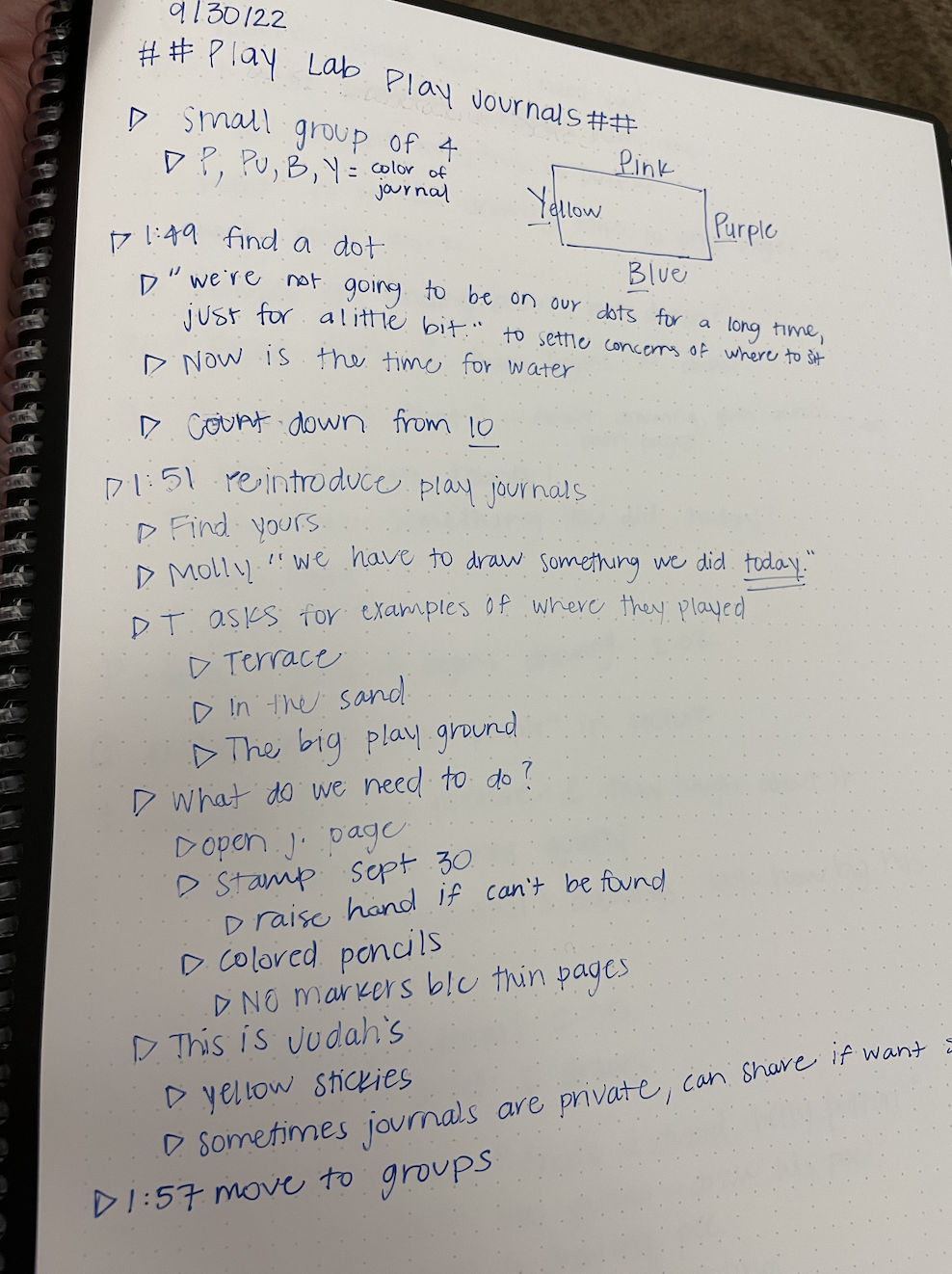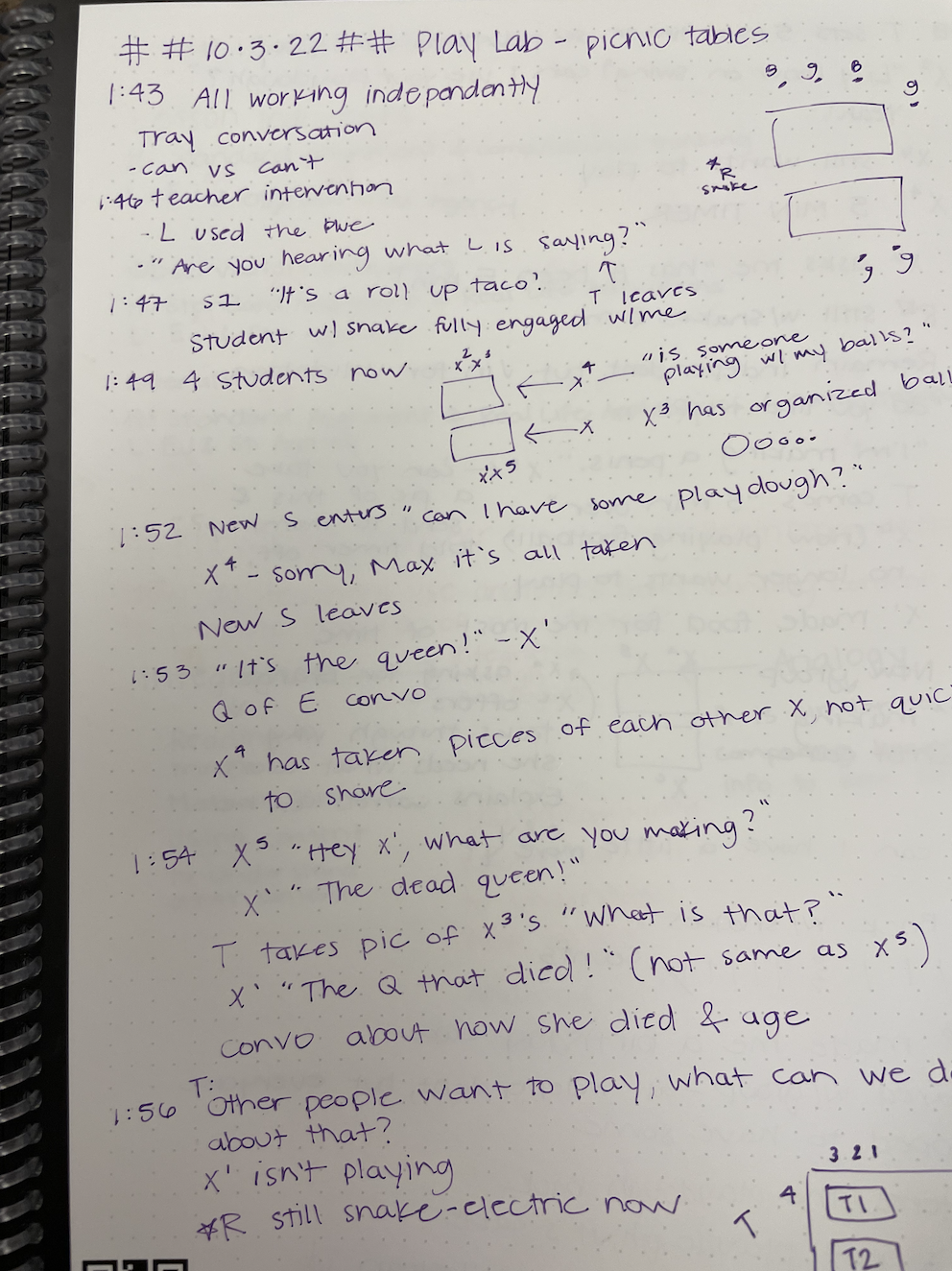Discover our
Home for Learning
- Contact
- 412-624-8020
- [email protected]
.jpeg?command_1=resize&width_1=220)

This year, Falk Lab School is partnering with Hatch Partners in Play on a research project investigating children’s play. Alongside Humanities courses like music, art, yoga, and WonderLab, Kindergarteners now have a class called Playlab multiple times per week
Tegan Ambrose, who previously taught Kindergarten at Falk, runs the class, documenting how Kindergarteners play and offering occasional “provocations”—materials like markers and, on one occasion, a bag of chestnuts—to spark their imaginations. Children complete play journals, giving Hatch and researchers from Falk and Pitt’s School of Education additional insight into what happens when children play.
Playlab was developed in concert with Faison K–5, a Pittsburgh Public School, as an equity-focused initiative designed to help educators prioritize extended periods of play. This year, it is running there and at Arsenal PreK–5, as well as at Falk. Hatch provides educators in these schools with a flexible framework and a collection of practices including play stories and play journaling. Playlab is supported by partners the Grable Foundation, Remake Learning, and The Pittsburgh Foundation.
Play has always been central to Falk’s educational philosophy: unstructured, self-directed inquiry is at the heart of the school’s approach to learning, and recess is a part of every student’s day. The class also fits with Falk’s emphasis on research: by paying close attention to how children play, researchers hope to delve more deeply into what happens in those moments and how play supports children’s learning.
To learn more about Playlab and its goals, we spoke to Katrina Bartow Jacobs, Falk Lab School research coordinator and associate professor of practice in Pitt’s School of Education, and Hillary Henry, a PhD student in the School of Education’s Learning Sciences and Policy Program in the Department of Teaching, Learning, and Leading. Bartow Jacobs helped design the research study and she and Henry are documenting what they see at Falk Lab School.
Q: What kinds of things are you looking at and recording from Playlab?
Hillary Henry: We have our base research question, so every time we go into the field we talk about what we want to focus on that day. A lot of the times when we are both out there, I will focus more specifically on a group of students or a certain activity that's happening, while Katrina looks more at the big picture of what's going on in the classroom.
Katrina Bartow Jacobs: Our big research question originally was “What kinds of opportunities does curated play offer kids for learning?” The main domains we are looking at are socioemotional learning, literacy, and math integration. We are looking for how they are using this time to develop negotiation skills, to engage in literacy activities and practices, and to engage in math. We've seen evidence of all three of those things.
Two sub-questions that we've developed through our field notes are, “How does everyone define play and what do we mean when we say play?” Because even in our own look at the literature, there's a lot of play-based learning, but what does that mean? How structured or unstructured is it? We feel like that is particularly important as we look at this for older grades. The other sub-question we've become interested in is “How is this approach really different at a school like Falk, that already has a strong play focus in the elementary grades in particular, versus a place like Faison where unfortunately kids really aren't given the opportunities, materials, or time to engage in that more open-ended play?”
Q: What kind of data are you collecting?
K: In terms of data, we are taking a lot of field notes. As part of Hillary’s methods class, we're really working on field notes; we're looking specifically at how children are communicating with one another or how Ms. Ambrose, their instructor, is communicating with them. The children are keeping journals and we are going to collect and scan those. As well, Tegan is doing documentation as the teacher, which is really one of the goals of Playlab: the teacher as a documentarian. So we will be collecting her documentation to see what she focused on and what she noticed primarily through the photographs she is capturing.
H: We talked about having Ms. Ambrose show the students the photographs, allowing the students to explain what they were doing in the pictures.
K: I think they are just starting to do that. Hillary will be interviewing Tegan and hopefully one of us will be going to interview Pittsburgh Public School teachers as well. The goal is really to gather more information about how the kids and teachers are seeing things. We are looking at kids’ use of the space and their reflections on it.
Q: Hillary, where does this fit in with your research?
H: I am particularly interested in how kids learn. What is going on that is making kids learn? So the Playlab aspect of my research is really about where learning is showing up in their play. Where are we seeing the socioemotional learning or the Language Arts showing up in their play without it being prompted?
Q: Can you give me a sense of what your field notes and observations look like? What sort of things do you write?
H: I can show you.

K: The goal of field notes is always to start with what's in front of us and then later we discuss and write our reflections and analysis. In the moment we try not to produce judgment and say this is good or bad but more just what are we seeing in that moment.
 Q: So you're noting some things that you heard?
Q: So you're noting some things that you heard?
K: Yes, since we know what questions we’re interested in, it helps us stay more focused on what we're attending to at the moment. If I overhear some children, like in kindergarten some kids were playing with chalk and sounding out the word “heart,” it helped us to keep our ears tuned. Some were focused on killing lanternflies and yes, that is interesting, but doesn't really answer our focus on literacy and math.
Our research questions give us a filter that we can use and then I'm also noting how children move through the play time. Do some kids stay at one station the whole time or do some shift their play? I do a lot of noting how many kids are in places and things like that, whereas Hillary is more sitting herself near a group and engaging. We try to note if a child comes over and asks us what we're doing.
H: We haven't really talked about the provocations.
K: So one thing Tegan has been doing is offering up provocations to the kids in the form of materials, often connected to the text but not always. It's just something she thinks they find engaging or supportive.
Increasingly, she’s been looking at how kids engage with certain materials. Some of the kids in one of the rooms got really interested in building crowns. So she brought materials that would support that and helped them construct the basic crown since they did not know how to do that. Then she brought out tape and material and paper to decorate. Then some of the kids were using that material to make pop-up books, which was not one of the goals but was really interesting to see.
Q: Is there an end product with this research?
K: The goal I had with Hatch and with Jill Sarada, Falk’s director, was kind of a memo of understanding around shared skill sets. So Hatch provided us with their materials and training and supported us with provocations and some of their frameworks. In return I am trying to do an evaluation of Playlab, like what are the benefits of this kind of time and space in schools? As I said, I’m increasingly learning what this will look like in very different school contexts and really attending to that variation. Without that, it won't paint as clear of a picture.
The goal in the end is an evaluative report of what kind of learning we see in these spaces and whether or not it promotes kinds of learning that are different from other ways. How does it change how the teachers know and see? I think at some point we will interview the Kindergarten teachers and ask how they feel about Playlab, how it helps them know and understand their kids. My hypothesis will be very different here, where play is a critical part of the day, from somewhere like Faison, where maybe it's much more seatwork. A teacher may see much more of a difference when a student has some agency.
An internal goal is for us to refine what we want this space to look like next year when we open Playlab to third grade. We're really excited to think about what might be the same and very different in upper elementary, which will be more unique and innovative in some ways.
Q: How does having the Anji Play materials available change things?
K: I think Ms. Ambrose is trying to use the Anji Play materials but it seems like bigger-body, physical play lends itself more toward collaboration because it’s almost like a necessity, like “I can't move this without you.”
I did experience one day that some kids were making a rocket ship out of the materials and one of the kids had to use the bathroom. So they were like, “Oh no, we have to wait for him!” They knew he had put in lots of effort. So I did see a moment of social awareness and social collection there. Mostly we’re seeing partner or side-by-side play or conflict resolution and negotiation.
One of the questions that came out of getting the Anji Play materials was the conception that when resources are limited, how does that change the tone of play? That's something that Anji Play talks about: how the scarcity of resources causes conflict. How do you have enough materials, or just not too many children playing with the same thing where it becomes a problem?
Q: How do you think that will contrast with third grade?
K: In some ways, Kindergarten is okay with the play being ephemeral, where something they make is there and gone. But I think third grade is going to want more time to developmentally dig into things.
H: Having to put their Play-Doh back into the container at the end—“But I made this!”
K: What's interesting to me here is the documentation piece. I’m really interested in what the teachers are documenting and the kids are documenting and reflecting because so much learning occurs in less formal spaces. Where is the learning happening and how do we help teachers and students recognize when learning is happening?
We already believe play is an important part of childhood learning, but we’re hoping to see it here in a super-rich way that can be the next step to seeing what it could look like in other spaces.
.jpeg)